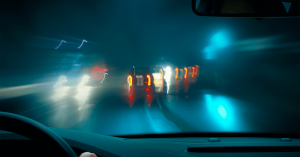 It is said that only 35% of adults have perfect 20/20 vision without glasses. By 2009, 42% of Americans were nearsighted enough to need corrective lenses. When this many people are affected by nearsightedness, what standard for vision should California drivers should be held to?
It is said that only 35% of adults have perfect 20/20 vision without glasses. By 2009, 42% of Americans were nearsighted enough to need corrective lenses. When this many people are affected by nearsightedness, what standard for vision should California drivers should be held to?
According to the California DMV, certain visual impairments can hinder someone’s ability to drive safely. A lack of central vision means drivers might miss road signs or hazards in front of them. A lack of peripheral vision means drivers might miss road signs or hazards coming from their sides, or they might be unable to make turns correctly. Drivers must also be able to judge distance to avoid stopping too short or driving too slow or fast.
In light of this, the California DMV’s screening standards require 20/40 or better vision in both eyes tested together with or without glasses, or 20/40 in one eye and at least 20/70 in the other. If you do not pass the requirements, the DMV may send you to the eye doctor to get a stronger prescription for your eyeglasses. You may then be tested again for your ability to use your vision while driving.
Depending on your conditions, the DMV might restrict you to driving only with corrective lenses on, or only during daytime hours. They may also limit you to driving in certain places. The DMV also has the right to issue you a license for a shorter period of time, such as one or two years.
